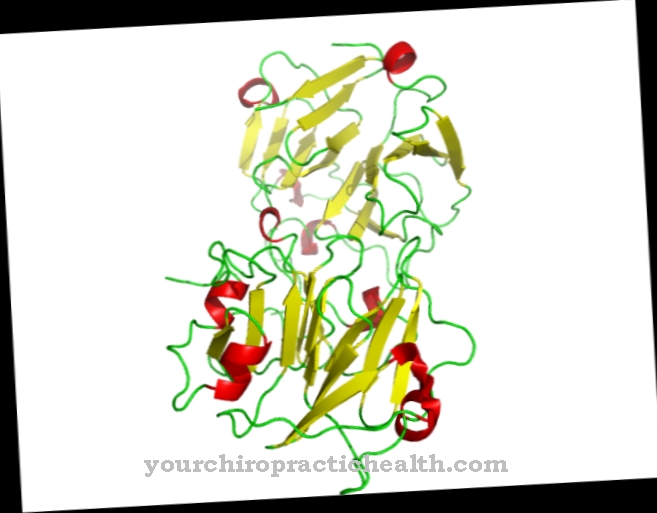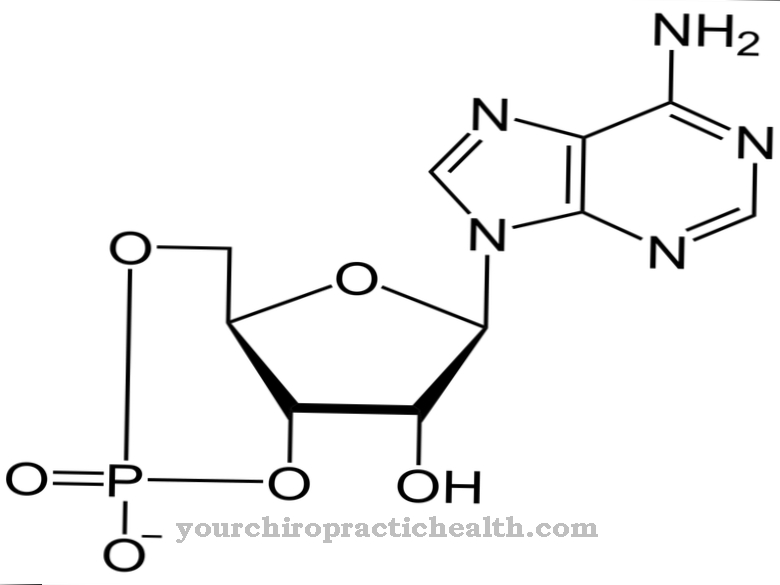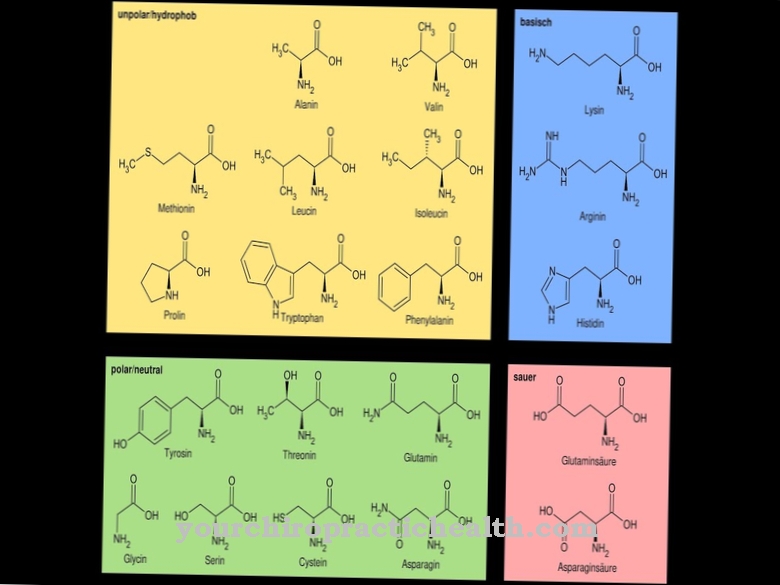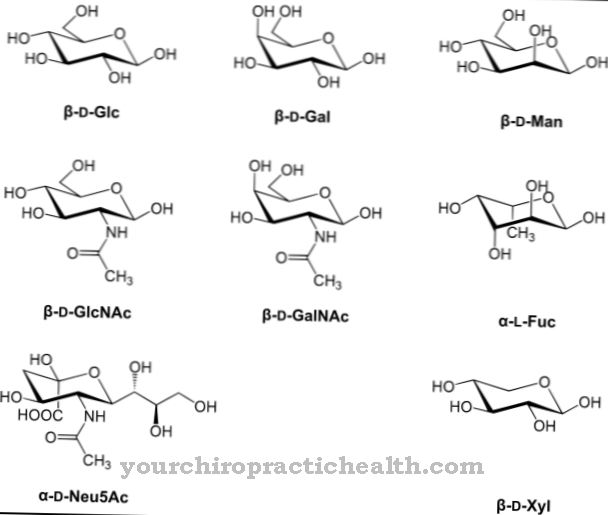Zymogens are proenzymes. These are inactive precursors of enzymes that can be converted into their active form by activation.
What are zymogens?
The term zymogens is rarely used. Mostly one speaks of proenzymes. Proenzymes are inactive enzymes. They act as a precursor to enzymes and can be activated by proteases. Proteases are enzymes that can break down proteins.
Some zymogens are also able to activate themselves. This process is known as autoproteolysis. Known zymogens are pepsinogen and chymotripsinogen. Both are made by the organs of the digestive tract. Accordingly, they play a role in digestion. However, zymogens also act as precursors of coagulation enzymes and are therefore important as coagulation factors.
Function, effect & tasks
Zymogens are found in many different places in the body. Two of the most popular zymogens are pepsinogen and chymotrypsinogen. Pepsinogen is the proenzyme of pepsin.
It is produced by the fundic glands of the stomach. Activation of pepsinogen occurs through autocatalysis. An acidic environment is a prerequisite for autocatalysis. This is ensured by the hydrochloric acid in the stomach. The production of pepsinogen is stimulated by the hormone gastrin and the gastrin releasing peptide (GRP).
Chymotrypsinogen is produced by the pancreas and released into the small intestine with the pancreatic secretion. There it is activated by trypsin. Trypsin is also initially available as a proenzyme trypsinogen. The activation of trypsinogen also takes place in the small intestine and is the task of enterokinase.
One zymogen found in the body's coagulation system is plasminogen. Plasminogen is the inactive precursor of the enzyme plasmin. This in turn is the most important enzyme in fibrinolysis. Another proenzyme in blood clotting is prothrombin. At the end of the coagulation cascade there is activation of prothrombin to thrombin.
Education, occurrence, properties & optimal values
Zymogens are inactive precursors to enzymes. Most of the time, zymogens are proteolytic enzymes. These are used for digestion and break down proteins. The preliminary stages of digestive enzymes serve to protect the organs that make the enzymes. If the organs were to secrete the active enzymes directly, they would damage themselves, since digestion would then begin in the producing organ.
The organ would digest itself. The presence of precursors is also important for blood clotting. The coagulation enzymes may only be in active form if blood coagulation is really necessary. In the event of an injury, the coagulation cascade must first be activated so that the coagulation factors can do their job. Otherwise, clotting would occur even without injuries. The consequence would be thrombosis with obstruction of blood vessels.
Diseases & Disorders
One disease that shows the importance of zymogens is pancreatitis. Pancreatitis is the technically correct term for an inflammation of the pancreas. Gallstones are the main cause of pancreatitis.
In most people, the bile duct joins the pancreatic duct into the small intestine. When a stone travels through the bile duct, it usually gets stuck at this point where it joins the small intestine. There it not only clogs the bile duct, but also the pancreatic duct. Despite this occlusion, the pancreas continues to produce its digestive enzymes and pancreatic secretions. There is a backlog in the ducts of the pancreas. The trypsinogen is then activated early within the pancreatic ducts. It turns into trypsin and can therefore also activate all other zymogens in the pancreatic secretion.
The digestive enzymes that are now active do their work and break down proteins. Since they are not in the intestine but in the pancreas, they do not break down food proteins, but the proteins that make up the pancreas. The organ thus digests itself. This pathological process is called autodigestion. The consequence of this autodigestion is massive irritation of the tissue, which results in severe inflammation. The main symptom of pancreatitis is sudden, severe pain in the upper abdomen. The pain often radiates back to the back in a belt shape. The entire abdominal area is tender. There is a rubber belly. This is caused by the accumulation of air in the intestine and a defensive tension.
The pain is often accompanied by nausea, vomiting, fever, and constipation. When the biliary tract is blocked, the backlog of bile acids also leads to yellowing of the eyes and skin. Severe courses are accompanied by blue-green spots around the navel. These are known as Cullen's characters. If, on the other hand, the spots are in the flank area, the appearance is called the Gray Turner sign.
If the pancreatic secretion with the active digestive enzymes reaches the abdomen through holes in the pancreatic wall, neighboring organ structures can also be digested.
Disturbances can also occur with the zymogens of the coagulation system. For example, there is a hereditary deficiency in plasminogen. This clinical picture is also known as dysplasminogenemia.However, a plasmin deficiency can also be acquired through fibrinolytic therapies or liver diseases. A lack of plasminogen is a risk of venous occlusion due to thrombi.
If these thrombi loosen, a heart attack or stroke can occur. Elevated levels of plasminogen are mainly found during pregnancy or after taking hormonal contraceptives. An increased plasminogen level has similar consequences as a too low plasminogen level. Because of this, women who take the "pill" have an increased risk of developing thrombosis. The same goes for pregnant women.












.jpg)



.jpg)










.jpg)
